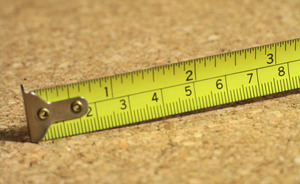Baseboard moldings function as a gap-filler where the floor and the wall meet. Their presence in a home, however, serves not only a functional purpose but adds beauty and character to a home, giving each home a unique sense of style. When choosing baseboard molding, whether it is in a newly constructed home or a remodeling project, there are several important things to consider.
Size & Style
Baseboard moldings can range from Puritan-like simplicity to large and elaborate. Depending on the style of your home, you need to decide which size and style of baseboard molding suits your needs and tastes. The baseboard molding can be as small as the space it covers, or it can be a foot high. Normally, baseboard is around 4 to 7 inches high. If there is a fair amount of activity in your house with little ones, a higher baseboard means fewer scuff marks on the wall. However, the larger the baseboard molding, the more expensive it is.
Materials & Finish
There are many choices when deciding what material to use for your baseboard. Red oak, poplar, red cedar, mahogany, maple and pine are only a fraction of the different wood options in baseboard molding. Although a large number of woods may be difficult to find at your local home improvement store, builders can specialty order just about any wood baseboard molding you can imagine. These woods can be stained to bring out their natural beauty, or they can be painted in whatever color you desire.
Baseboard moldings also come in a wood composite or MDF. These baseboard moldings may be primed and pre-finished, which makes the painting process much easier. Further, wood composite baseboard moldings do not split or contain knots or finger joints. There is also no grain raise. Generally, wood composite baseboard moldings have more consistency from piece to piece. Their light weight makes wood composite baseboard moldings easier to handle.
Brand
The top brands in the baseboard molding industry provide a fairly consistent product and price comparison. At major home improvement stores, you will have anywhere from two to five brands from which you may select. Builders supply stores or specialty millwork shops will have more of a varied collection than your local Lowe’s or Home Depot. You may also choose to skip the brand-name world altogether and go with a local craftsman. A carpenter specializing in baseboard moldings will be able to give your home a custom look, uniquely tailored to you.
Price
Since money is usually the final decision-maker in any purchase, this will be a factor in the baseboard molding you choose. Again, the larger and more intricate baseboard moldings are more expensive than the simpler, shorter baseboard moldings. If you decide on a wood baseboard molding, there is a price variation from one wood to the next. Pine or poplar are among the cheapest, while mahogany, maple and red cedar are expensive. Wood composite is cheaper than wood in just about every case. The brand-name baseboard moldings will have a slight variation when choosing from your local home improvement store. The more customized the baseboard moldings are, whether they are from a specialty millwork factory or a local wood-worker, the more you will pay.






